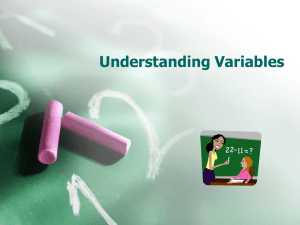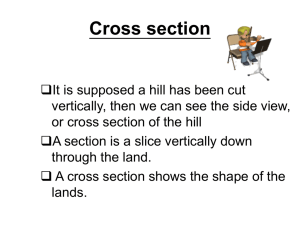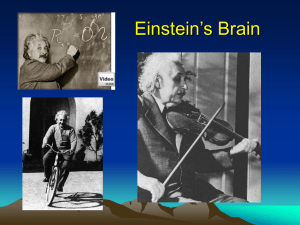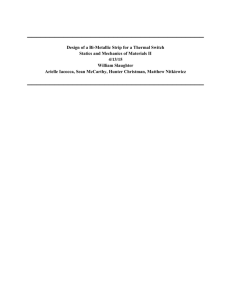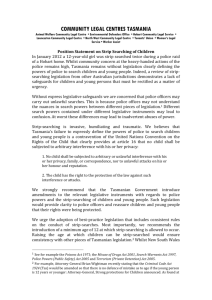Based on the book by Robert & Michele Root
advertisement
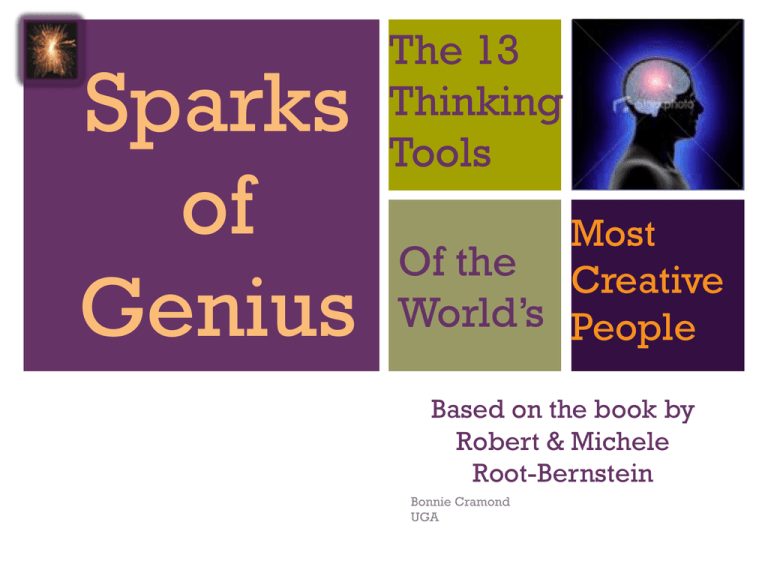
+ Sparks of Genius The 13 Thinking Tools Most Of the Creative World’s People Based on the book by Robert & Michele Root-Bernstein Bonnie Cramond UGA + Assumptions & Understandings 1 Creative thinking in all fields occurs preverbally, before logic or linguistics comes into play, manifesting itself through emotions, intuitions, images, and bodily feelings. 2 Creative thinking is integrative and transdisciplinary. “The most beautiful thing we can experience is the mysterious. It is the source of all true art and all science. He to whom this emotion is a stranger, who can no longer pause to wonder and stand rapt in awe, is as good as dead: his eyes are closed.” Einstein 2 + 1. Observing 3 + 1. Observing Describe the people in the picture. Is someone holding something? What? Is someone wearing a hat? Who? Describe the hat. What is the relationship among these people? What season is it? Do you know who the people in the picture are? What did you observe in your environment outside of the picture? 4 + 2. Imaging Imagine a day at the beach Close your eyes and try to conjure vivid images as I read this passage 5 + 3. Abstracting MEMOIR IN SIX WORDS Sum up your life (to date) in six words Crawl, step, run, step, crawl, lay. Broke. Payday. Broke. Payday. Broke. Payday ... Didn't do what I should have. California, Pennsylvania, Jersey, Manhattan, Vancouver, Seattle. Half over but feels like new. Child, adult, wife, mom, widow, me. Don't even try to plan it. 6 + 4. Recognizing Patterns "Recognizing patterns is one of humanity's greatest abilities. It is the basis of conscious awareness that brings cohesion to a chaotic world by allowing us to see contrast as well as similarity." -Maggie Macnab in "Decoding Design" 7 + 5. Forming Patterns 8 + 6. Analogizing 9 + 6. Analogizing 10 + 7. Body Thinking Where is your mind? If you play a sport or a musical instrument, what happens if you think about what your body is doing? The mind is not the brain, nor is it confined to the brain. When stuck on a problem, Darwin walked, Einstein played the violin. Many great thinkers have used body movement to stimulate thought. Einstein, like many great thinkers, described pre-symbolic thinking. That is, the reception of thought that is neither picture, nor word, nor numeral. It is perceived first in the body, then becomes symbolic. “It is by no means necessary that a concept be tied to a sensorily recognizable and reproducible sign (word), but when this is the case, then thinking becomes capable of being communicated. I have no doubt that our thinking goes on for the most part without use of signs (words) and beyond that to a considerable degree unconsciously.” Einstein 11 + 8. Empathizing IsamuIs Isamu Nogushi “Core” invited visitors to, “Put your hand inside and you will know what the inside of a stone feels like.” riding a light beam to conceptualize relativity Einstein’s experience of riding a beam of light enabled him to conceptualize relativity. 12 13 + Synectics One step in the creative problem solving process of synectics is creating a personal analogy. For example, to solve the problem of how to ship apples without bruising them, an individual might think about how s/he would want to be shipped if s/he were an apple. + 9. Dimensional Thinking 14 I saw the angel in the marble and carved until I set him free. Michelangelo An exotic n-sphere is a sphere from the point of view of topology. But it is not equivalent to a standard n-sphere from the point of view of differential calculus. + 10. Modeling he Borromean rings consist of three topological circles which are linked and form a Brunnian link, i.e., removing any ring results in two unlinked rings. The Borromean rings consist of three topological circles which are linked and form a Brunnian link, i.e., removing any ring results in two unlinked rings 15 + 11. Playing Keri Mullis, nobel prize winner for discovering the Polymerase Chain Reaction, a technique which allows a small strand of DNA to be copied almost an infinite number of times, said that he discovered it while playing. He was driving along the California coastline, thinking of molecules like Tinkertoys, and they fell into place 16 + 12. Transforming Take a strip of paper, give it one twist and glue the ends together. Draw a line along the middle of the strip the entire length. Is the shape 2-dimensional or 3dimensional? Cut the strip along the line in the middle. What do you get? Cut the new strip down the middle, what do you get? Investigate what happens when the strip has an odd or even number of half twists before joining and is then cut. Möbius strip 17 + M.C. Escher’s Artistic View of the Möbius Strip 18 + 13. Synthesizing Creative people combine thoughts, fields, senses, modes, etc. in the process and the result is experienced as a whole. Desmond Morris—biologist, popular author, painter 1. “Becomes” the animal he is studying. 2. Studies the characteristics of the animal as a scientist and as an artist. 3. Uses and extends biological processes in creating imaginary creatures, which he calls biomorphs, in his art. 19 + The Key to Using the 13 Sparks is 1. Be aware of your thinking (metacognition) 2. Be strategic about your thinking 3. Use all thinking skills possible 4. Recognize your strengths and develop your weaknesses 5. Practice 6. Combine 20 + A True Story Washington, DC Metro Station on a cold January morning in 2007. The man with a violin played six Bach pieces for about 45 minutes. During that time approx. 2 thousand people went through the station, most of them on their way to work. • After 3 minutes a middle aged man noticed there was a musician playing. He slowed his pace and stopped for a few seconds and then hurried to meet his schedule. • 4 minutes later: the violinist received his first dollar: a woman threw the money in the hat and, without stopping, continued to walk.. • 6 minutes: A young man leaned against the wall to listen to him, then looked at his watch and started to walk again. • 10 minutes: A 3-year old boy stopped but his mother tugged him along 21 + 22 No one knew this, but the violinist was Joshua Bell, one of the greatest musicians in the world. He played one of the most intricate pieces ever written, with a violin worth $3.5 million dollars. Two days before Joshua Bell sold out a theater in Boston where the seats averaged $100. This is a true story. Joshua Bell playing incognito in the metro station was organized by the Washington Post as part of a social experiment about perception, taste and people's priorities. The questions raised: in a common place environment at an inappropriate hour, do we perceive beauty? Do we stop to appreciate it? Do we recognize talent in an unexpected context? One possible conclusion reached from this experiment could be this: If we do not have a moment to stop and listen to one of the best musicians in the world, playing some of the finest music ever written, with one of the most beautiful instruments ever made.... How many other things are we missing? http://www.youtube.com/watch?v=myq8upzJDJc + A "synthetic education" requires us to change HOW we teach with 8 BASIC GOALS in mind: 1. Emphasize the teaching of universal processes of invention in addition to the acquisition of disciplinary products of knowledge. 2. Teach the intuitive and imaginative skills necessary to inventive processes 3. Implement a multidisciplinary education that places the arts on an equal footing with the sciences 4. Integrate the curriculum by using a common descriptive language for innovation 5. Emphasize the transdisiplinary lessons of disciplinary learning 6. Use the experiences of people who have successfully bridged disciplines as exemplars of creative activity within our curricula 7. Ideas in every discipline should be presented in many forms in order to reach the widest range of minds! 8. Forge a pioneering education, whose purpose it is to produce the imaginative generalists who can take us into the uncharted future! 23



